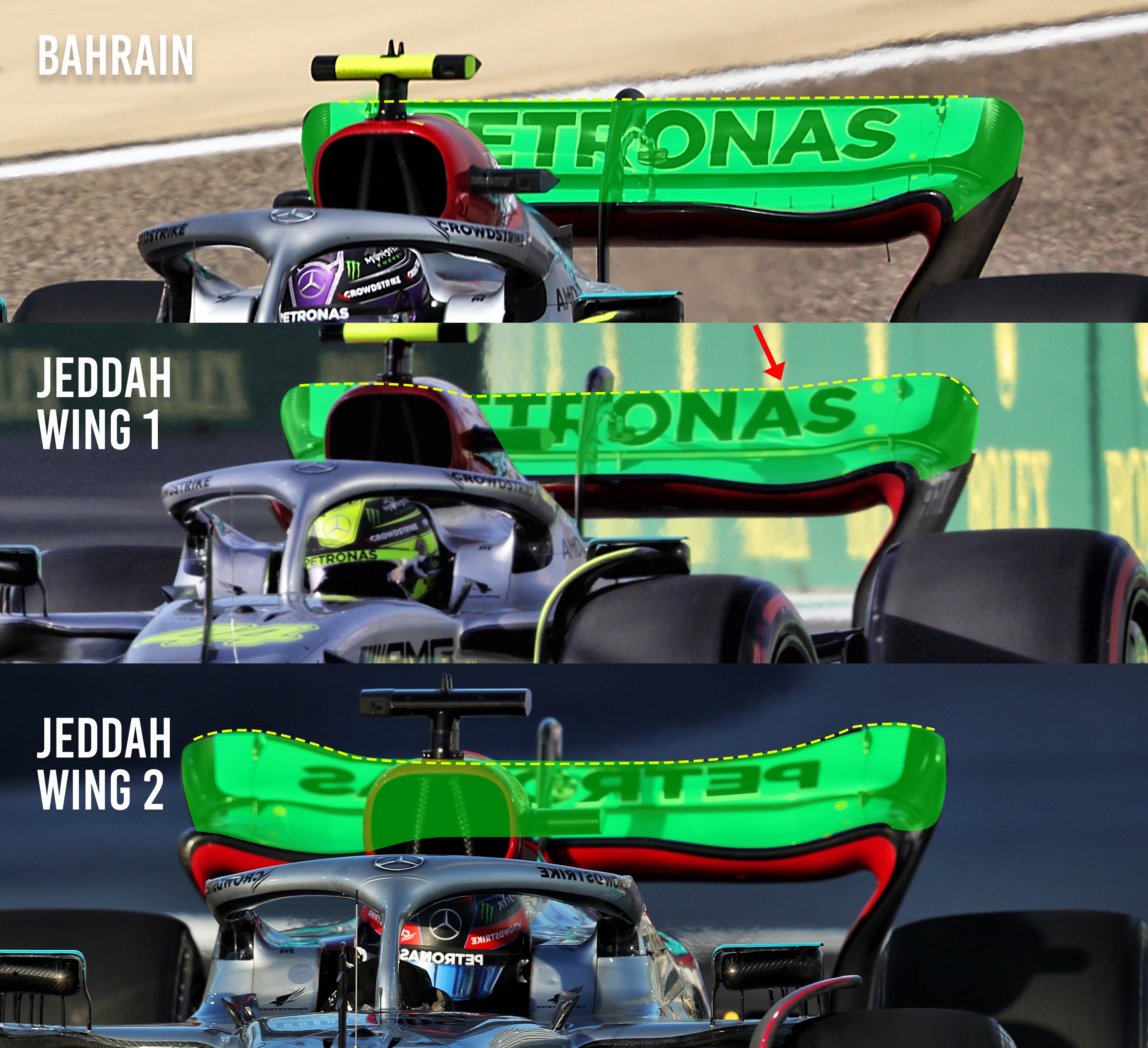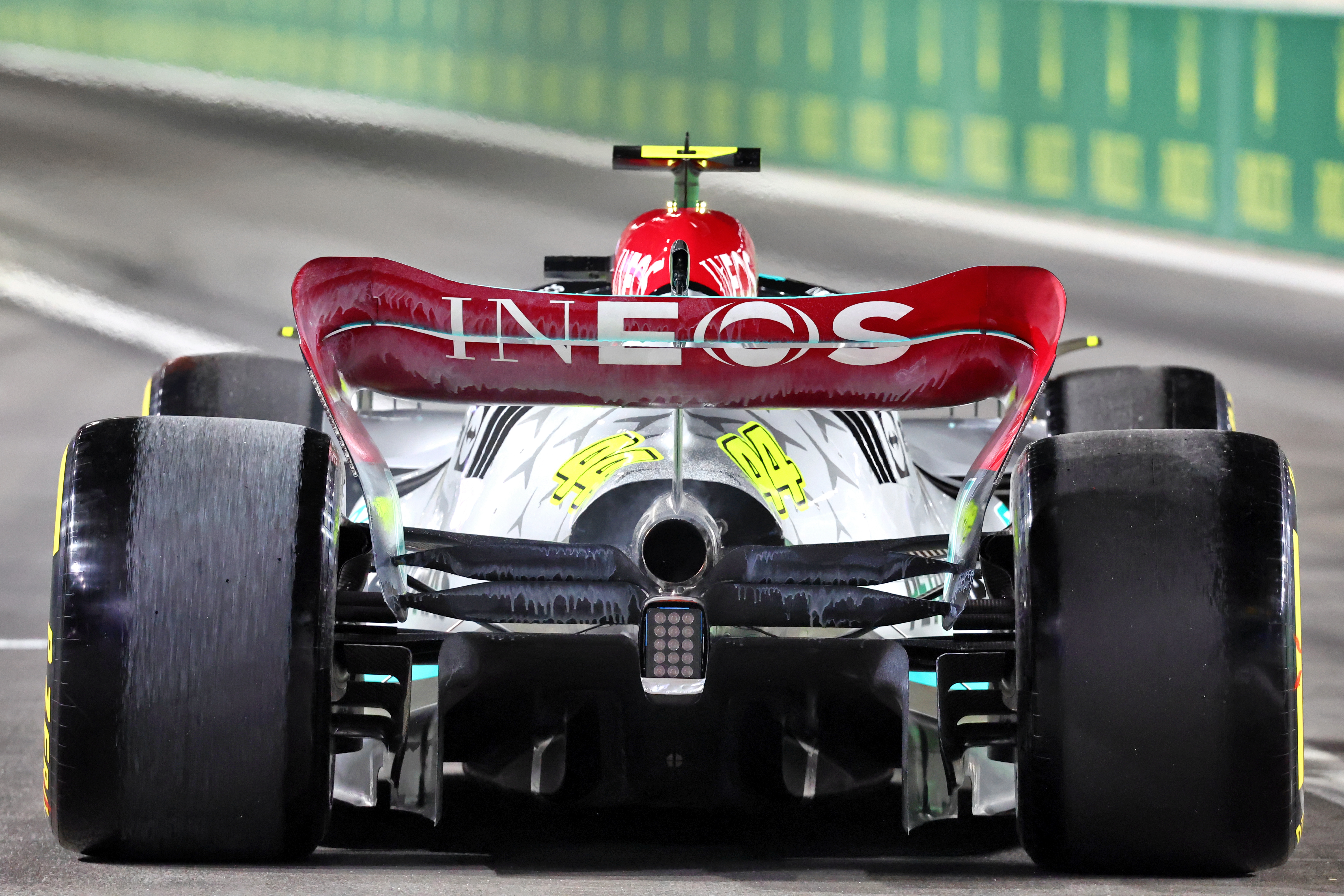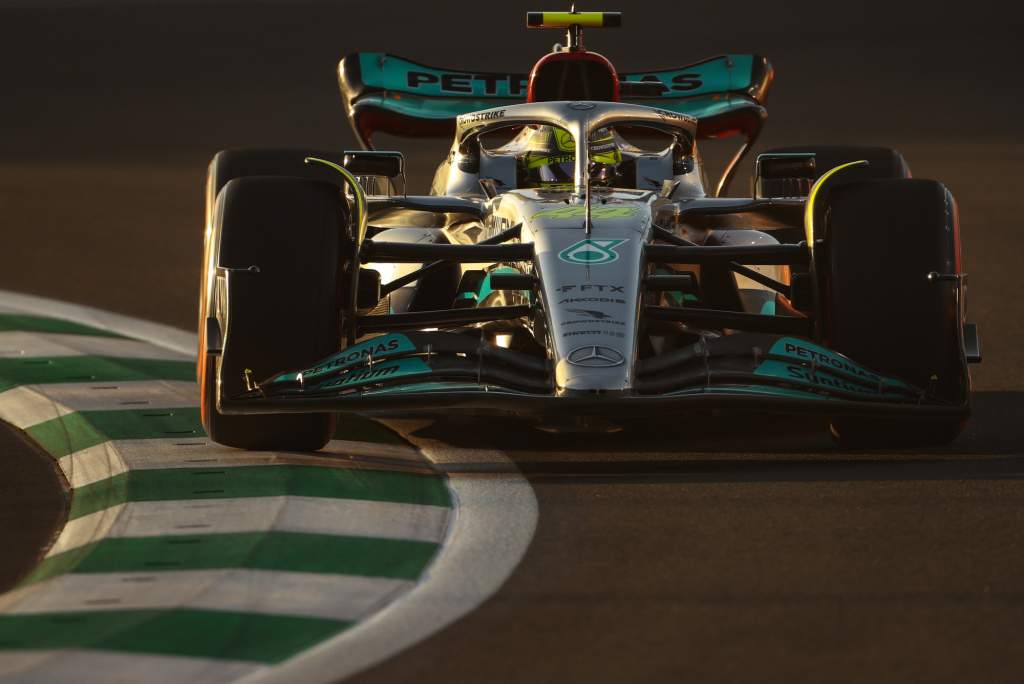Up Next

Following my previous article on the downforce and drag levels Mercedes ran compared to Red Bull and Ferrari at the Bahrain Grand Prix, we have now seen in detail what steps Mercedes is looking at taking for Saudi Arabia.
I mentioned I was confused as to why Mercedes was going about it in the way it was. The only reason I can think of is that it doesn’t have a complete lower-downforce rear-wing assembly ready to use. I would add that, for a championship-contending team, that’s a little of a lame excuse, so let’s see what might turn up on Saturday.
However, to explain what I mean with what we have seen on Friday, it looks like it has done as Toto Wolff joked it was going to and taken a chainsaw to the rear-wing flap’s trailing edge.
Mercedes tested two versions in FP1: one with a little bit trimmed off and then another with a lot trimmed off. From FP2 it looks like it has settled on the latter.

Comparing either of these versions to Bahrain, it looks like Mercedes has removed the trailing edge Gurney flap. In itself, the Gurney flap is not very efficient but in some cases it actually brings the rear wing to life. It moves the centre of pressure of the actual rear wing a little rearwards.
It’s not just that the balance moves rearward and gives the driver a feeling of more stability under braking, but it’s also a bit like a parachute in that it keeps the rear of the car behind you. So if you have a lower-downforce wing assembly and can run a Gurney flap on the trailing edge to get the downforce and drag level you are happy with, it will offer more stability under braking than just a wing with no gurney flap that gives the same level of downforce.
As for the trim lines on the rear flap, on both of these versions it moves the trailing edge of the wing forward and downward. With racing car design, this is the last thing you want to do. Yes, you will reduce the downforce and with it the drag, but it will be detrimental to the car’s stability, the centre of pressure of the actual wing will move forward, and in turn this will give less leverage on the rear tyre contact patch.
With any wing on the rear of these cars, you want the trailing edge to be as high and as far rearward as the regulations allow. Then you will have the most efficient downforce possible for a given size of rear wing.

As we can also see from the flow-vis on the lower beam wing from Hamilton’s car during FP2 (which doesn’t look great to me) Mercedes has also made changes in that area.
It’s difficult to really see the detail, but as the rear of the car all works as one it is probably in line with the upper wing changes.





